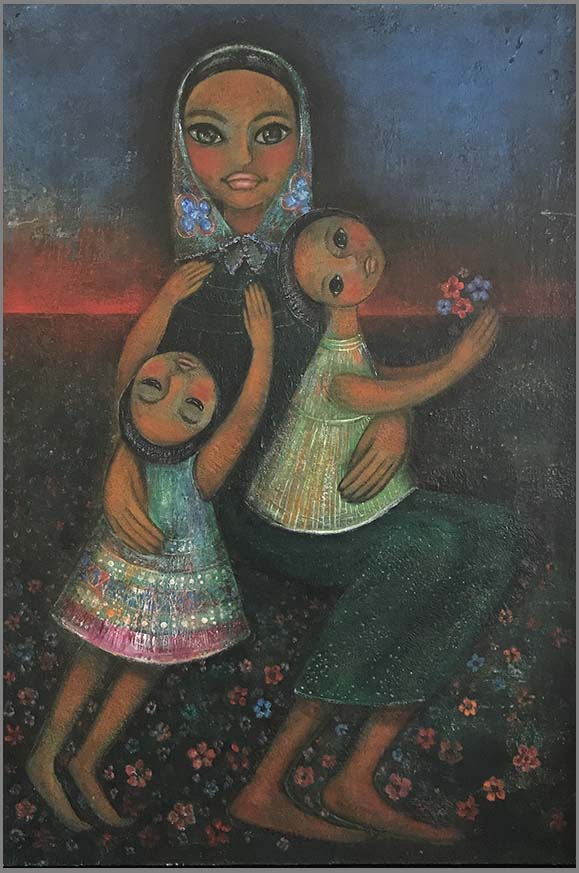

HEDWIG "HEDI" SCHOOP
"FAMILY"
OIL ON PANEL, SIGNED
CALIFORNIA, C.1960
45 X 31 INCHES
Hedwig “Hedi” Schoop Schoop was an artist, painter and mostly known as a ceramicist. Schoop was one of the most talented (and imitated) artists working in California in the 1940s and 1950s. She designed and modeled almost every piece in her line, her style and subjects were an extension of her painting style. Her ceramic creations include vases, plates, bowls, ashtrays and other forms, Schoop’s figurines of men and women are the most popular with collectors. In 1940, shortly after a move to larger quarters, Schoop began calling her business “Hedi Schoop Art Creations”; it would remain under that name throughout the life of the business. Schoop’s company employed more than 50 workers turned out as many as 30,000 pieces per year in the late 1940s. Hedi Schoop’s creations are often figures caught in motion – with arms extended, skirts aflutter, heads bowed – and serve a purpose in addition to decoration. She designed shapely women with skirts that flared out to create bowls and women with arms over their heads holding planters. She also produced charming, bulky-looking women with thick arms and legs. There were others, but Schueftan lost a lawsuit Schoop had brought against her in 1942 for design infringements. A fire destroyed the Schoop pottery in 1958, at which time she sold many of her molds and did some freelance work for other California companies. Schoop retired from working full-time as a ceramic designer in the early 1960s, but her talents would not let her retire from art completely; she focused on her painting throughout her semi-retirement, which lasted until she died in 1995.
|
|---|
|